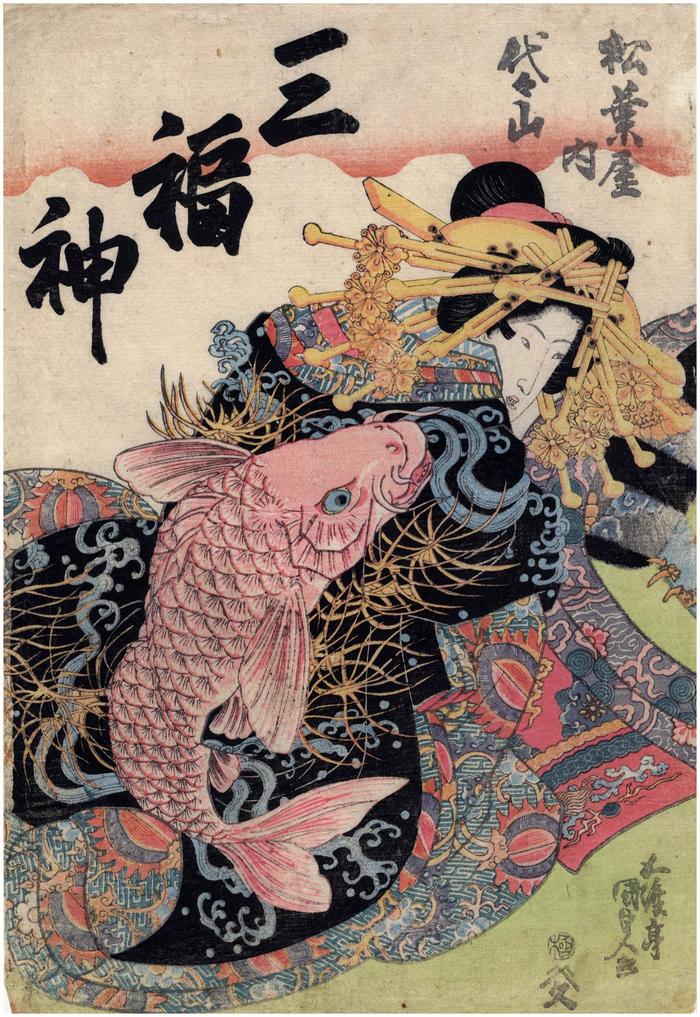Utagawa Kunisada (歌川国貞) / Toyokuni III (三代豊国) (artist 1786 – 01/12/1865)
Mitate of the Three Gods of Fortune in their Prime (全盛見立三福神) each represented by a famous courtesan - this is the left panel of a triptych showing Yoyoyama of the Matsubaya (松葉屋内代々山)
1824
10.25 in x 15 in (Overall dimensions) Japanese color woodblock print
Signed: Gototei Kunisada ga
五渡亭国貞画
Publisher: Yamamotoya Heikichi
(Marks 595 - seal 02-026)
Censor's seal: kiwame
Royal Museums of Art and History, Belgium (via Cultural Japan)
Tokyo Metropolitan Library - the whole triptych
Nationaal Museum van Wereldculturen (Rijksmuseum Volkenkunde, Leiden) via Ritsumeikan University - this panel only
Nationaal Museum van Wereldculturen (Rijksmuseum Volkenkunde, Leiden) via Ritsumeikan University - the center panel only
Nationaal Museum van Wereldculturen (Rijksmuseum Volkenkunde, Leiden) via Ritsumeikan University - the right-hand panel The elegance of this particular print is almost beyond description. Each of the three top ranked courtesans shown in the triptych are stand-ins or mitate for one of the 7 Propitious Gods. This one probably represent Ebisu who is often shown with a red tai attached to the line hanging from his fishing pole. The courtesan in the middle panel may represent Jurōjin (寿老人), the god of longevity. On her robes is the classic image of a tiger facing off with a dragon. Before her lies a scroll painting with the three gods shown, one of them being Daikokuten as can be seen from the mallet of good fortune/wealth that he is wielding.
John Fiorillo and Peter Ujlaki noted in an article on Shigeharu in Andon that when courtesans wore clothing decorated with a dragon that it was an indication of their high rank.
****
There is another copy of the full triptych in Seikadō Bunko Art Museum.
****
The figure in the right-hand panel of this triptych is a courtesan wearing a fabulous kimono showing Raijin, the Thunder God, in the lower right corner. His linked drums with their tomoe motifs and anchor are displayed a little above him and to his right, our left. However, a much more subtle decoration of attached weaponry can be seen over Benkei's symbol, the eternal Wheel of the Law.
****
Illustrated in color in 歌川国貞 : 美人画を中心に (Utagawa Kunisada: Focusing on Pictures of Beautiful Women), published by Seikado Bunko, 1996, #98, pp. 62-63.. The full triptych is shown.
Yamamotoya Heikichi (山本屋平吉) (publisher)
beautiful woman picture (bijin-ga - 美人画) (genre)
mitate-e (見立て絵) (genre)
